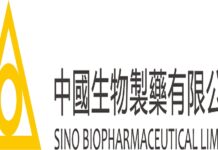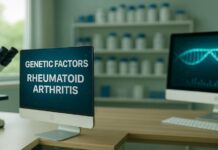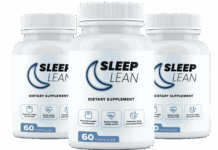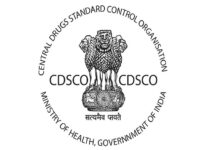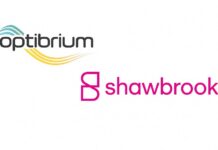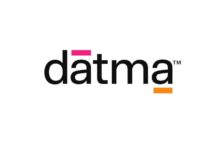Big tech along with Big Pharma have gone on to play a crucial role in elevating standards of living as well as shaping the modern age.
Over the course of several decades, both big pharma and big tech have heavily relied on patents as well as acquisitions to maintain their ability to continually develop and restock their R&D pipelines.
However, there are distinct differences in the way each company has traditionally built as well as used its intellectual property portfolio.
Both world’s colliding
The rising number when it comes to connected medical devices and the growing influence of digital tech in the field of healthcare are causing the realms of Big Pharma as well as Big Tech to come together at a swift rate.
There are many positive outcomes that can arise from this scenario. That said, it is important to first develop a deeper understanding of the differences among the business models on each side. There is a notable distinction between the two industries in terms of the role played by standards-setting organisations- SSOs.
Standards from the industry play a very important role when it comes to the development of technology, media, and telecoms, also called the TMT sector.
An SSO will go on to provide a clear plan for the development of a technology and promote participation from academia as well as industry members to work together and also share ideas so as to create a new norm.
The mobile telecom sector provides an excellent illustration of this strategy, as seen in the development from 2G to 5G and now even beyond. Each standard within this evolution has showcased significant developments and improvements.
Companies in this environment rely on standard essential patents- SEPs for protection, an idea that is relatively uncommon in the pharmaceutical industry.
The commercial use of patents in the technological landscape differs greatly from that in the pharmaceutical sector.
Unlike the strict rules in the field of medicine, the tech industry works under less rigorous rules, primarily overseen by the SSOs.
In the tech world, concepts such as Patent Linkage Systems- PLS and patent term variations do not happen to be present.
The tech sector primarily focuses on generating income by way of licencing its technologies, while the pharmaceutical industry aims to keep its hold on its blockbuster products while avoiding the obstacles associated with their expiration when it comes to patents.
However, there are signs indicating the merging of the two worlds.
The licencing model is effective for platform technologies that are often utilised in the case of drug development.
AI is currently being used to forecast the attaching of small molecules to proteins.
The use of AI is beneficial because it helps in lead candidate optimisation as well as toxicity predictions. This highlights a significant obstacle in pre-clinical drug discovery as well as development: the need to find a drug candidate that happens to be both effective and safe.
There is a company in this field that holds trademarks for using convolutional neural networks to find drugs. However, it does not have an ownership stake when it comes to drug development.
The business model, rather, involves licencing the technology to pharmaceutical companies. These companies can utilise the technology to quicken their drug discovery programmes and, at the same time, potentially minimise the requirement for in vivo testing of drug hopefuls.
Greater cooperation between major tech firms and pharma players
The pharmaceutical industry is right now confronting complex challenges that look for new approaches. One such approach is the use of AI within the drug discovery landscape, which is being increasingly embraced.
However, for AI to function effectively, it relies on a substantial amount of data. Acquiring this data typically involves either an agreement to work together or the technology needed to collect and also process it.
Currently, both of these ideas are still new to a large portion of the drug sector.
The growth in big data technologies is serving as an impetus that has brought the two sectors nearer together.
The pharmaceutical industry produces a significant amount of data, and major players in technology are well-equipped to derive valuable insights from these broad and extensive records.
By collaborating to gain in-depth knowledge of how the two industries use the data and address difficulties such as its privacy, sharing, and security, one can effectively harness the full potential of data analytics.
One institutional obstacle in the pharmaceutical industry is a lack of acquaintance with data sharing procedures. Companies in this industry are often uncertain to share their data with third-party services, as they regard it as a potential loss of competitive edge.
Moreover, the preservation of patient privacy is frequently cited as the rationale for retaining data within the organisation.
While there is some merit to this claim, an excessively careful approach could prevent pharmaceutical companies from fully capitalising on the available technologies. The fear of sharing can be alleviated by developing a deeper understanding of how cooperation within the big tech industry can be beneficial.
The increase in connected medical devices and services will undoubtedly bring about this shift that has been witnessed in other industries as well as such as the automotive sector.
In the future, there may be a need for them to adhere to a SOP, which could lead to the implementation of SEPs within the pharmaceutical industry. In order to support innovation, encourage interoperability, and promote partnership, it is necessary for SEPs to be licenced under Fair, Reasonable, and Non-Discriminatory- FRAND terms. This ensures a balanced and inclusive environment that rewards as well as safeguards invention.
The Impact of SEPs and FRAND Licences
SEPs and FRAND licences have the potential to facilitate the progress of customised medications. One of the pharma companies received authorization from the US Food and Drug Administration- US FDA a few years ago for a 3D-printed drug designed to treat epilepsy.
In order to achieve scalability, the formulation of the ink will have to be handled by pharmaceutical companies, while the provision of printers will be the responsibility of tech companies.
To prevent the need for every patient, pharmacy, or hospital to have multiple printers to create medications, it will be necessary to establish uniformity among the different suppliers of inks and printers. SEPs could be beneficial at every step of the process.
Doctors have the ability to prescribe medication for an individual based on factors such as weight, age, as well as the severity of their disorder. However, in order to print a prescription, they need software, ink, and printers that follow standards enabling connectivity between drugs from different companies.
The example may appear imaginative at this point, much like the concept of self-driving cars being evaluated on public roads a couple of decades ago.
The lesson to be learned is that in order for truly digital and personalised medicine to ever become a reality, a shift in mindset needs to occur at this moment.
In conclusion
The pharmaceutical industry is not accustomed to the kind of innovation and disruption that big tech companies are renowned for. However, in order to avoid getting left behind, today’s pharmaceutical giants must quickly adapt to this changing terrain.
In a similar way, if Big Tech companies lack a thorough understanding of how Big Pharma operates, they may easily make errors while developing their own intellectual property portfolios in that sector.
In the future, it will be necessary for multidisciplinary groups to develop and execute IP tactics. These teams will be able to utilise their expertise in both areas so as to achieve success.


